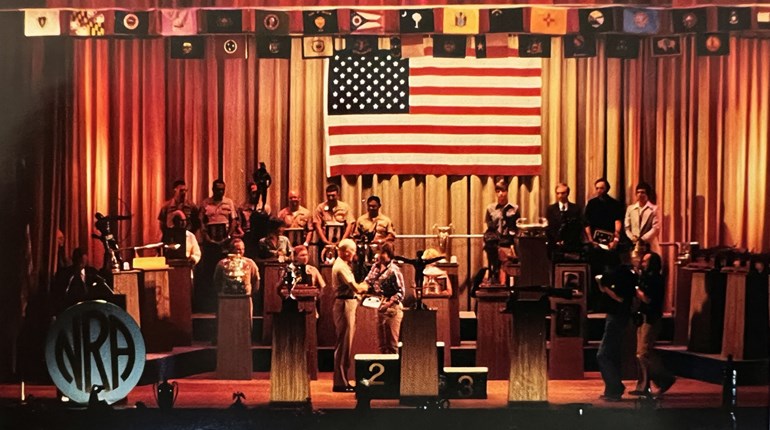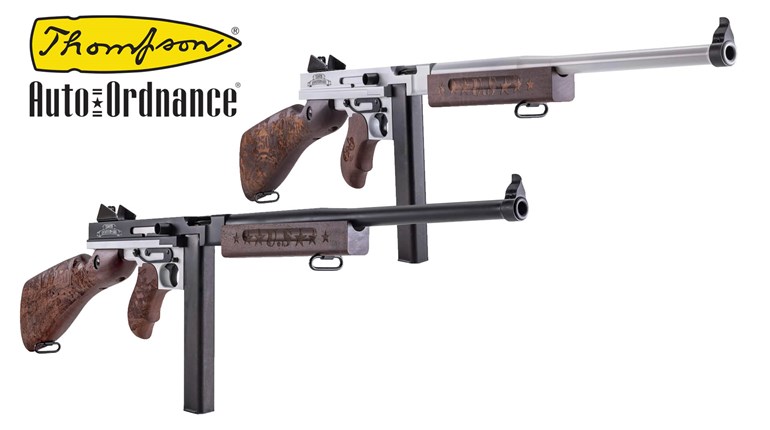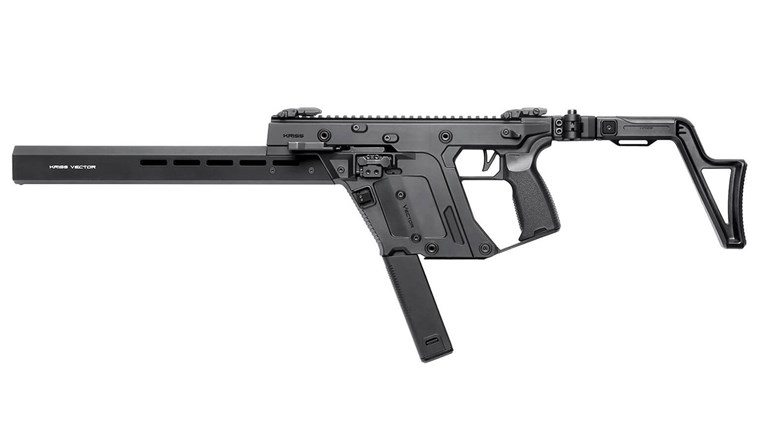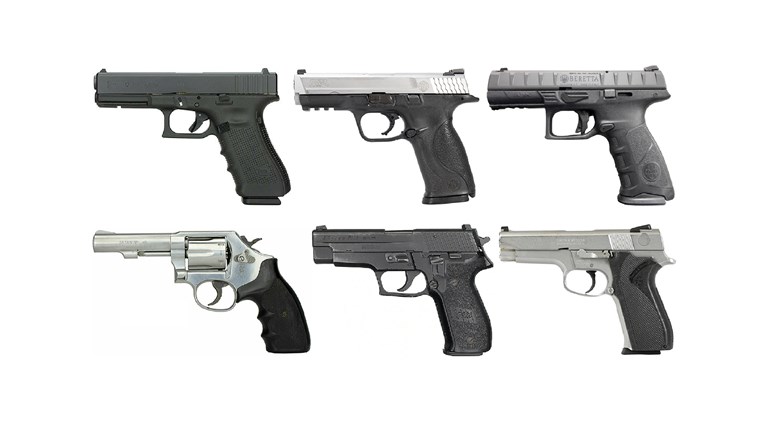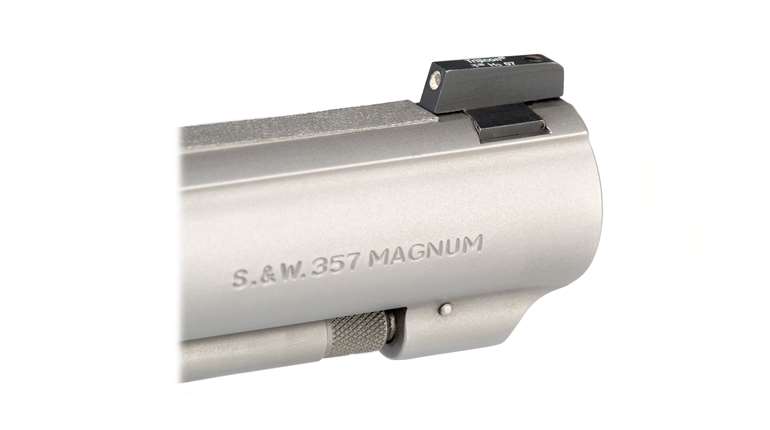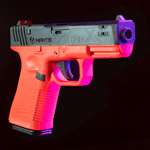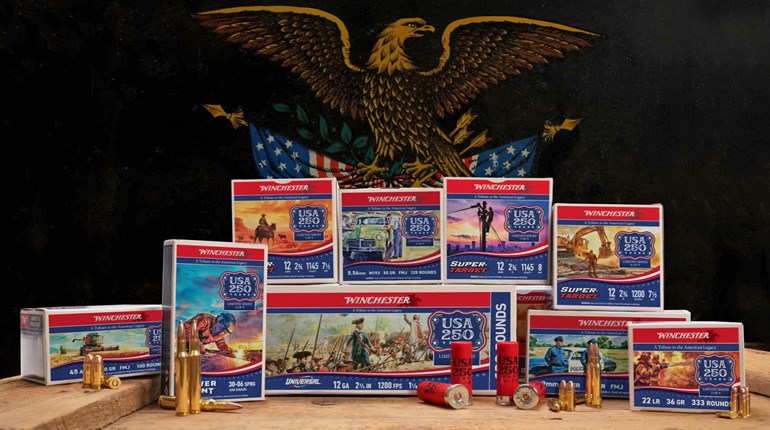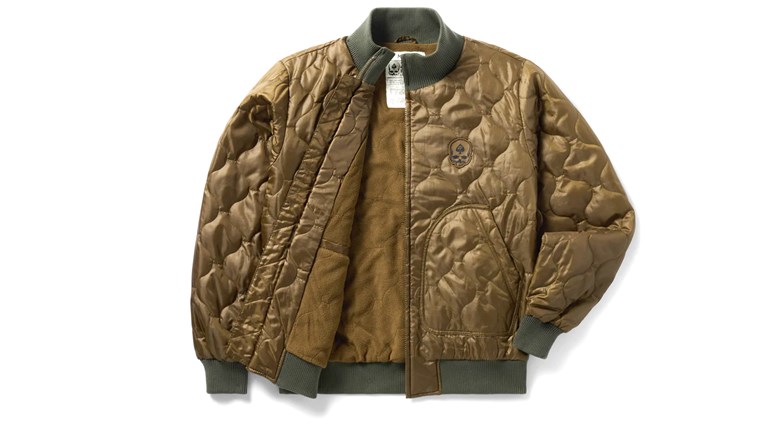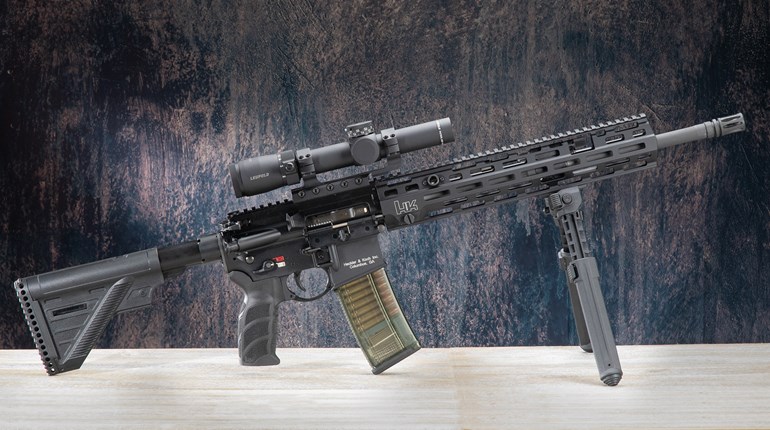
John M. Browning tops the list of people I would have loved to have known and interviewed. The list of his firearm inventions is as long as it is impressive. And they all came out of his little Utah shop, which was mighty crude by today's standards. However, for all of his great designs, nothing in my book tops his invention of the .45-caliber 1911 pistol. It is one of—if not the—greatest, fighting pistols we've ever known.
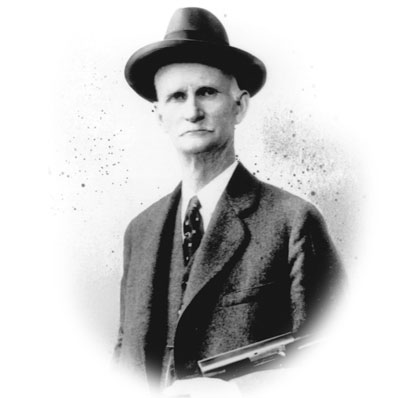
For more than 60 years, the U.S. Military relied on some sort revolver as the sidearm for its troops. However, in the early 1900s it conducted trials that allowed inventors to submit a semi-automatic handgun. Browning was just one of many who submitted a pistol for this evaluation. His offering passed military tests with flying colors and, along with the new .45 ACP cartridge, became the standard issue of our military forces. The 1911 was born.
The first real field test of the new pistol came in 1916, when Pancho Villa attacked the sleepy little New Mexico town of Columbus. "Black Jack" Pershing's punitive expedition put the 1911 to the test in the rough climate of the desert Southwest. It was found that the .45 ACP cartridge was adequately powerful and the new pistol was easy to field-strip and maintain. The 1911 went on to add to its glory in the brutal European conflict that came to be called World War I.
In those days, with the exception of wartime production, the 1911 pistol was the sole property of Colt Firearms. Colt built military versions of the pistol, along with a civilian model and various target models. Over the years, the pistol was chambered for .45 ACP, .38 Super, 9 mm, .22 LR and various other chamberings. It became, and still is, one of the most popular pistols in America.
Many of the young men who returned from World War I began careers as law enforcement officers and they figured the pistol that served them well in the trenches of Europe would be the gun to carry as they went about their duties. One of these returning young men was named Charlie Miller.
Miller joined the Texas Rangers in the early 1920s and wore a Ranger badge for more than 40 years. Throughout that long service, his chosen sidearm was the Colt 1911 in .45 ACP. Early in his law enforcement career, Miller had to deal with a criminal who jumped him from behind and proceeded to stab him. He could get his 1911 around and pointed at his attacker, but he couldn't squeeze the grip safety in that awkward position. Finally he caught his assailant by the hair of his head, pulled him around front and stopped the attack.
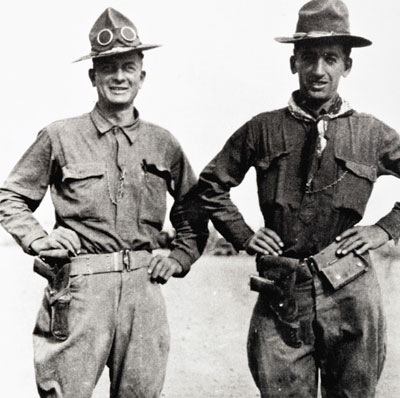
Miller's solution to the perceived grip-safety problem was to wrap some rawhide around the pistol grip, thereby deactivating the safety. In addition, he chose to carry his 1911 with a round in the chamber and the hammer on half cock (a practice I definitely do not recommended). Carrying his 1911 in the front of his waistband, without a holster, Miller would draw the pistol and thumb the hammer back much as one would draw and fire a single-action revolver. When a young firearms instructor saw the way Miller carried his 1911 pistol he asked, "Mr. Miller isn't that dangerous?" To which the salty Ranger replied, "Son, if the damned old thing wasn't dangerous, I wouldn't be wearing it!"
The Texas Rangers was one of the first law enforcement agencies to adopt the 1911. Although it was never officially issued, it quickly became the chosen fighting pistol for most of that intrepid force.
Capt. M.T. "Lone Wolf" Gonzaullas carried a matched pair of beautifully engraved .45 autos and used them in at least a couple of gunfights. Capt. Bob Crowder's usual armament was a pair of nickel-plated .45s, and many lesser-known Rangers just didn't consider themselves properly dressed without a big Colt semi-automatic riding on their hip. Although it is not commonly known, Capt. Frank Hamer was carrying a 1911 in .38 Super, as a backup to his single-action .45 Colt the day he assisted in dispatching Clyde Barrow and Bonnie Parker.
In the days before World War II, the 1911 became a symbol of veteran peace officers throughout the country. It was a favorite weapon of famed FBI agent Walter Walsh, and it was 1911 pistols in the hands of two FBI agents who wrote the end to John Dillinger in 1934.
However, all was not a rosy future for the 1911 pistol. For some reason, municipal police agencies insisted their officers carry revolvers.
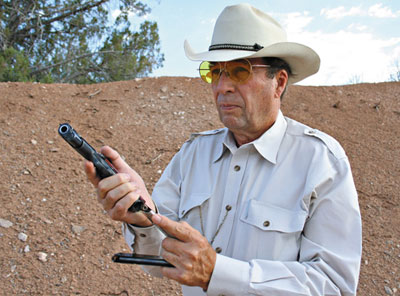
When I went into police work in 1968, we could carry anything we wanted to as long as it was made by Smith & Wesson or Colt and chambered for .38 Spl. We were told to avoid all semi-automatic pistols, because they were allegedly bad about jamming and just weren't safe. The idea of carrying a pistol with the hammer cocked made blithering idiots out of most police chiefs.
Without having any experience, I had bought into the prejudice against the 1911. Finally, a friend of mine got tired of hearing me spout the party line. He handed me an Ithaca World War II-era .45 and a box of ammo, admonishing me to shoot it and see if it would jam. Over the several months I shot this old veteran, I found it was reliable, accurate enough to get the job done and easy to carry.
Another thing that made me smile regarding the the 1911 pistol was my experience with the .44 Mag. revolver. Elmer Keith being one of my heroes, I just had to have a Smith & Wesson Model 29. The only trouble was I just wasn't stout enough to handle the recoil of heavy .44 Mag. ammo. When I handloaded it down to a manageable power level, I discovered my loads nearly duplicated the power and energy of the .45 ACP cartridge. But the Model 29 was still a heavier handgun and more difficult to conceal than a semi-automatic. As a result, the 1911 began to make even more sense.
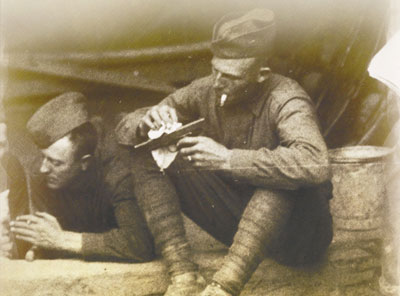
All of the above was still an academic endeavor, because our police chief insisted we continue to carry .38 Spl. revolvers. Being an intrepid soul, however, I soon found a loophole in our department policy. While it clearly specified what our duty weapon would be, it did not address the question of backup guns. Even-tually, my backup gun became a Colt Commander chambered in .45 ACP.
In the early 1970s, our department formed a narcotics unit and I was assigned as its supervisor. I quickly used my new position as a foundation to begin a campaign to allow us to carry semi-automatic handguns. Working this plainclothes assignment, my officers needed a pistol that could be more easily concealed. I also argued that officers on narcotic raids often came up against well-armed dope dealers, so we needed more firepower. In the meantime, we also demonstrated to our chief that a well-maintained 1911 did not malfunction very often, if at all. However, when it did, the stoppage could be quickly cleared if the officer had received proper training. Finally, the chief gave in to my pestering and gave us the green light. I've carried a 1911 ever since.
My law enforcement career took me down to Southwest Texas in the early 1980s, not far from the Rio Grande. I was content for many reasons, not least of which was the fact that the Rio Grande country was also 1911 country. With the exception of the U.S. Border Patrol, which still carried revolvers, the 1911 was king.
A huge amount of the credit for adoption of the 1911 by American law enforcement goes to Col. Jeff Cooper. Through his writings and teachings, Col. Cooper taught us how to set the gun up with good sights and a crisp, clean-breaking trigger. Back in those days, 1911s came with small, hard-to-see sights and heavy triggers—much like those designed for the original military pistols. Cooper is directly responsible for the fact that, today, this is no longer a problem and 1911s come from most manufacturers properly configured. He also led the way in developing methods to quickly recharge the pistol and to clear the occasional malfunction.
Throughout almost 30 years as a Texas peace officer, I found that the 1911 pistol was an excellent fight-stopper. When judiciously presented to a bad guy, the fight was often over before a shot was fired. On other occasions, it became clear a 230-grain hollowpoint, delivered to center mass, would generally cause hostilities to quickly cease.
Being a dyed-in-the-wool 1911 fan, you might imagine I've owned a lot of them over the years. You would be correct in that assumption. However, I am pleased to say the best three guns I have ever owned are still in my possession.
In the early 1970s, I learned the Colt Custom Shop was liquidating a number of its guns. Going over the list, I saw one was a blued, factory-D engraved Government Model in .45 ACP. The price was $750 and I bought the gun sight unseen. While I was waiting for the pistol to be delivered, I decided to go whole hog and get some carved ivory stocks for it. The old Gun-Art Company in New Jersey, made a set of stocks for me with the Masonic square and compass carved on the right panel and the Mexican eagle and snake on the left side. Over the years, the ivory stocks have darkened beautifully and holster wear has given the full-coverage engraving a burnished look I find particularly pleasing. What's more, this engraved 1911 just happened to come with one of the best triggers I've ever found on an out-of-the-box pistol.
I carried my engraved 1911 while serving as Chief Deputy for the Denton County Sheriff's Office in North Texas. It became my constant companion when I moved down to Southwest Texas. I was wearing it the day I was sworn-in as the elected sheriff of Crockett County, and I carried it on most days until my retirement from law enforcement. We've shared some exciting adventures.
My next favorite 1911 came from the Ed Brown Custom shop. A few years ago, Brown approached me about building a 1911 to my specifications and offering it as a limited-edition pistol. I suggested it be a full-size pistol in .45 ACP with fixed Novak sights, having a white dot on the front sight only. It should have an arched mainspring housing, a combat thumb safety and no forward cocking serrations.
In order to keep the cost down, I suggested the pistol be stocked with smooth panels from Tru-Ivory, which has the look and feel of real ivory at a fraction of the cost. Built with quality Ed Brown parts and properly fitted, this pistol meets all of my 1911 needs.
When I signed up for the week-long 250 pistol class at Gunsite, the Ed Brown .45 was the gun I chose to take with me. One of the instructors asked to look at my 1911 and commented on how tight it was. He hoped that tightness wouldn't cause any malfunctions. It's a mark of Ed Brown's expertise that my 1911 digested some 1,500 rounds during that class without a single stutter.
The 1911 pistol I carry almost continually is a Series 70 Colt Commander. I bought the gun, and another just like it, to use as a pair on raids, manhunts and felony apprehensions. I had the triggers tuned and a set of high-visibility sights installed.
Following my retirement, I gave one gun away as a gift and retired the remaining Commander.
However, good guns don't deserve to be left on the shelf. So, with that in mind, I sent this 1911 off to Wayne Novak to work over. Novak began by installing a set of his popular fixed combat sights. On the advice of Wiley Clapp, I specified the rear aperture have a .145-inch notch and the front sight have a gold bead. I call them "Geezer Sights" because the wider rear sight and the gold bead front sight make it easier for aging eyes to attain a quick sight picture.
In addition to the sights, Novak installed a combat thumb safety and thin, rosewood concealment stocks. He also replaced the springs and the barrel, tuned the trigger and otherwise made the gun fully reliable for street carry.
In a lifetime of carrying 1911 pistols, I've learned Col. Cooper was right; all a good 1911 needs is high-visibility sights and a good trigger. Anything else that is added should be included only if there is a real need for it, such as ambidextrous safeties for the left-handed shooter. Lights, extended slide stops, bayonets or other gizmos simply don't belong on a pistol meant to be carried day in and day out. The only 1911s I've seen that were prone to malfunctions were those with a lot of unnecessary stuff stuck on them or "tuned" by some shade tree gun mechanic.
Today, we are blessed with a plethora of good fighting pistols, but the 1911 is not anywhere near ready for the boneyard. This 100-year-old design will still hold its own with the higher-capacity, polymer wonders of the day. It is a design that was battle tested long before I ever put one on, and that has given me a good deal of comfort throughout the years.
So, during the celebration of the venerable 1911's 100th birthday, I have to agree with what my old friend Harry Owens, from Denton County, Texas, used to say. "I just can't imagine keeping a house without one!"










